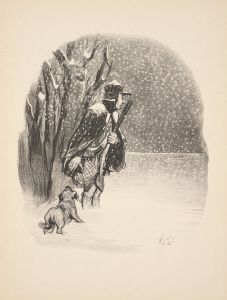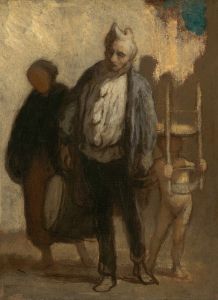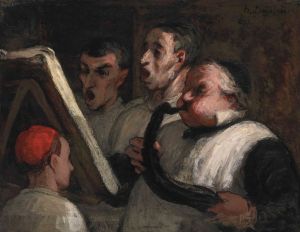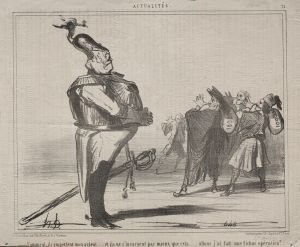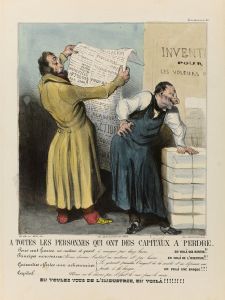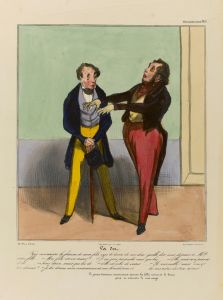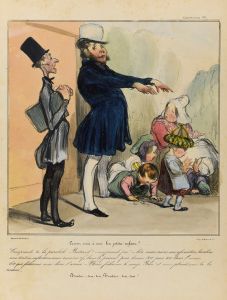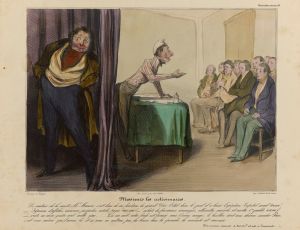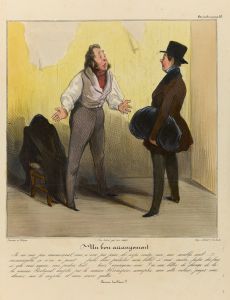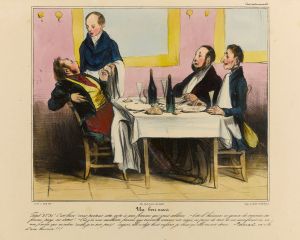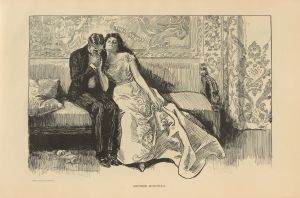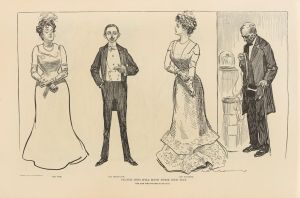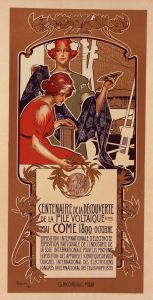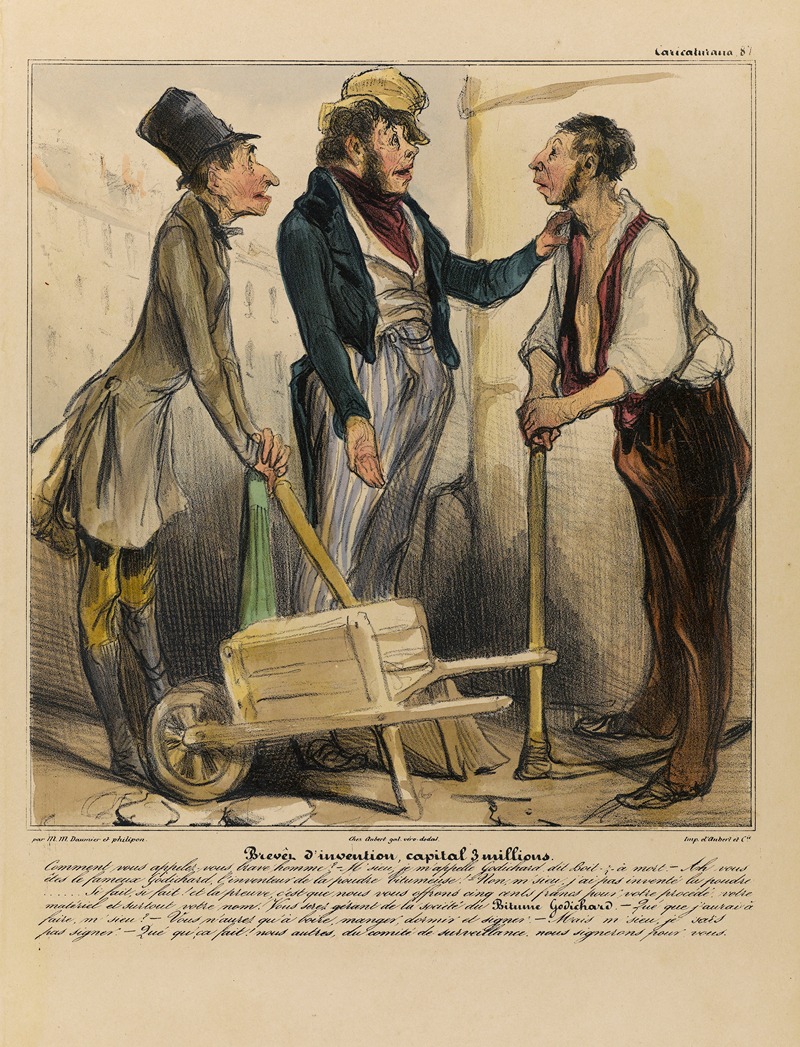
Brevet d’invention, capital 3 millions
A hand-painted replica of Honoré Daumier’s masterpiece Brevet d’invention, capital 3 millions, meticulously crafted by professional artists to capture the true essence of the original. Each piece is created with museum-quality canvas and rare mineral pigments, carefully painted by experienced artists with delicate brushstrokes and rich, layered colors to perfectly recreate the texture of the original artwork. Unlike machine-printed reproductions, this hand-painted version brings the painting to life, infused with the artist’s emotions and skill in every stroke. Whether for personal collection or home decoration, it instantly elevates the artistic atmosphere of any space.
Honoré Daumier, a prominent French artist known for his caricatures, paintings, and sculptures, created the lithograph "Brevet d’invention, capital 3 millions" in the 19th century. Daumier's work often critiqued social and political issues of his time, and this piece is no exception. The title, which translates to "Patent of Invention, Capital 3 Million," suggests a satirical take on the industrial and economic developments of the era.
Daumier was born in 1808 in Marseille, France, and moved to Paris with his family in 1816. He began his artistic career as a lithographer, a medium that allowed him to produce multiple copies of his work and reach a wider audience. His talent for caricature quickly became apparent, and he gained recognition for his ability to capture the essence of his subjects with sharp wit and insight.
"Brevet d’invention, capital 3 millions" is part of Daumier's broader body of work that critiques the burgeoning industrial society and the speculative financial ventures that characterized the period. The 19th century was a time of rapid industrialization and economic change in France, with many new inventions and enterprises emerging. However, this period also saw the rise of speculative bubbles and financial scandals, which Daumier often highlighted in his art.
The lithograph likely depicts a scene involving a dubious or exaggerated invention, poking fun at the speculative nature of such ventures. Daumier's work frequently included exaggerated characters and situations to emphasize the absurdity or hypocrisy he perceived in society. His keen observation and ability to convey complex social commentary through humor made his work both popular and influential.
Daumier's lithographs were published in various satirical journals, including "La Caricature" and "Le Charivari," which were known for their critical stance on politics and society. Through these publications, Daumier reached a broad audience and became a significant figure in the world of political satire.
In addition to his lithographic work, Daumier was also a skilled painter and sculptor. His paintings often depicted scenes of everyday life, capturing the struggles and triumphs of ordinary people. Despite his talent, Daumier did not achieve significant financial success during his lifetime, and he lived modestly.
Today, Daumier is celebrated as one of the most important satirical artists of the 19th century. His work continues to be studied and appreciated for its incisive commentary on the social and political issues of his time. "Brevet d’invention, capital 3 millions" remains an example of his ability to blend humor with critical observation, reflecting the complexities of the industrial age in which he lived.





